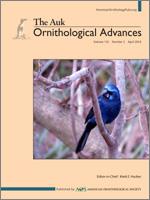We used the prevalence of avian haemosporidian blood parasites (Plasmodium and Haemoproteus), quantified by PCR screening and DNA sequencing, to reevaluate a previously described negative relationship, based on microscopic examination of blood smears, between the prevalence of parasites in an avian host population and the length of the embryo development period of the host species. Analyses were restricted to small land birds in continental areas of the Americas. Prevalence determined by DNA methods averaged 22.5% and did not differ between tropical and temperate latitudes. Compared across taxonomic families or subfamilies, parasitism levels obtained by microscopic examination of blood smears and by DNA methods were strongly correlated and decreased, similarly in tropical and temperate latitudes, with increasing length of the embryo development period. Understanding the association of reduced haemosporidian infection with prolonged embryo development remains a fundamental challenge that emphasizes a potential role for defense against pathogens in the evolution of avian life histories.
How to translate text using browser tools
21 February 2018
Duration of embryo development and the prevalence of haematozoan blood parasites in birds
Robert E. Ricklefs,
Vincenzo A. Ellis,
Matthew C. Medeiros,
Maria Svensson-Coelho
ACCESS THE FULL ARTICLE

The Auk
Vol. 135 • No. 2
April 2018
Vol. 135 • No. 2
April 2018
avian malaria
Haemoproteus
Haemosporida
incubation period
parasite prevalence
Plasmodium





